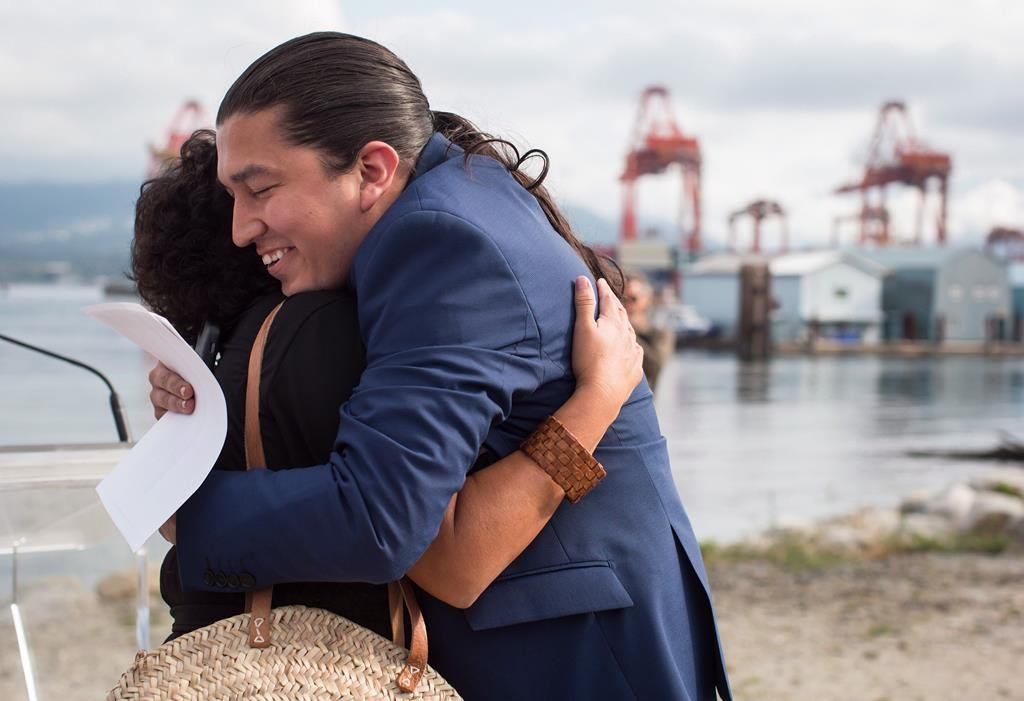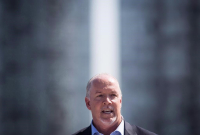Environmental and economic development choices split First Nations in Canada

A Vancouver-area First Nation's decision to support a liquefied natural gas export project may have come as a surprise to some, considering the nation's role in helping to derail the Trans Mountain pipeline expansion earlier this year.
The Squamish Nation community was one of a handful of First Nations that lined up to convince the Federal Court of Appeal in August to overturn National Energy Board approval of the controversial oil pipeline expansion from Edmonton to the West Coast, leaving its future in doubt.
But the nation's acceptance of the Woodfibre LNG last month reinforces a simple truth, says historian Ken Coates: While Canada's first people may approach tough questions differently than non-native Canadians, their decisions are motivated by many of the same factors.
"These are complex issues and you're always going to have people on both sides," said Coates, who is the Macdonald-Laurier Institute's senior fellow in Aboriginal and northern Canadian issues and the author of several books and publications on Indigenous relations.
"These are communities that need real sustainable, substantial economic benefit, where Indigenous people have been locked out of the market economy for 150 years, since Confederation. They've been wanting in for a long period of time."
Woodfibre LNG gained trust through five years of consultations and by agreeing to abide by conditions under the nation's environmental and cultural assessment process, which operates separately from federal and provincial regimes, said Khelsilem, a spokesman for the Squamish Nation council and one of its councillors who voted against the proposal in a close 8-6 vote.
In return for its support, the community is to receive annual and milestone payments totalling $226 million over the 40-year life of the project, and its companies will be in line to bid on up to $872 million in contracts.
Hundreds of jobs are expected to result for the nation's 4,000 members, nearly half of whom live off reserve in the Greater Vancouver area.
Khelsilem, who uses one name, said the product involved in each project — Woodfibre LNG's relatively benign natural gas versus the "extreme risk" of diluted bitumen from the oilsands in the Trans Mountain pipeline — was just one of several factors in the decision to back one and fight the other.
"I think that if governments want to work with First Nations to create economic development, there's ways to do it. And our nation like many other First Nations are saying, 'We want to do it, we want to do responsible economic development and there are ways for the government to work with us on that,'" he said.
But, he added: "Our future isn't in the resource extraction industries like a lot of other First Nations."
The court-enforced duty of the federal government to consult, and where appropriate, accommodate Indigenous wishes when it considers projects that might adversely impact potential or established Aboriginal or treaty rights, makes their support key to both industry and environmentalists.
In November, the Montreal Economic Institute released a study called "The First Entrepreneurs – Natural Resource Development and First Nations," that disputes the "widely held belief" that First Nations systematically oppose projects.
It shows that Indigenous people working in oil and gas extraction make average wages of almost $150,000 per year, while those working on gas pipelines made more than $200,000. According to a 2016 Statistics Canada census the average wage of Indigenous workers nationwide was less than $50,000.
A few weeks later, the Canadian Association of Petroleum Producers released a report called "Toward a Shared Future: Canada's Indigenous Peoples and the Oil and Gas Industry," that shows six per cent of the workers in oil and gas identify themselves as Indigenous, a total of about 11,900 people making generally better-than-average wages.
It also points out that Indigenous governments received $55 million in payments related to oil and gas activity outside of the oilsands in the second half of 2017 and that oilsands companies had spent $3.3 billion on procurement from Indigenous-owned companies in 2015 and 2016.
The message of financial gain from co-operation with industry — dubbed "economic reconciliation" — resonates with Clayton Blood, general manager of Kainai Resources Inc., a company established by the Blood Tribe of southern Alberta to pursue economic development including oil and gas exploration.
"We're finding that Indigenous peoples seem to be becoming a convenient excuse for turning down some of these controversial projects when a majority of First Nations along the (Trans Mountain) pipeline route were looking for opportunities," he said.
Environmentalists have used "scare tactics" to try to boost opposition to development on his reserve, too, Blood says, including blaming hydraulic fracturing or "fracking" of wells for methane in water wells, a problem he says existed long before fracking began.
But Grand Chief Stewart Phillip, president of the Union of B.C. Indian Chiefs and an ardent environmentalist, makes it clear he thinks fracking is a problem.
He says supporting Woodfibre LNG means the Squamish Nation have chosen to prosper while damage is done to the environment of Indigenous people in northeastern B.C. where the gas is produced.
"It's not about money," he insists. "It's about the land, it's about the environment, it's about our culture, our traditions, our livelihood, our subsistence."





Comments